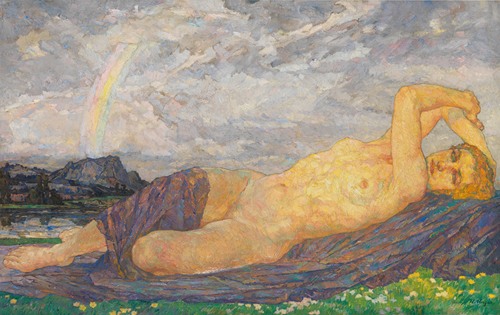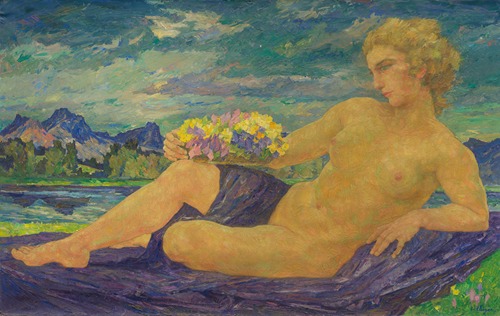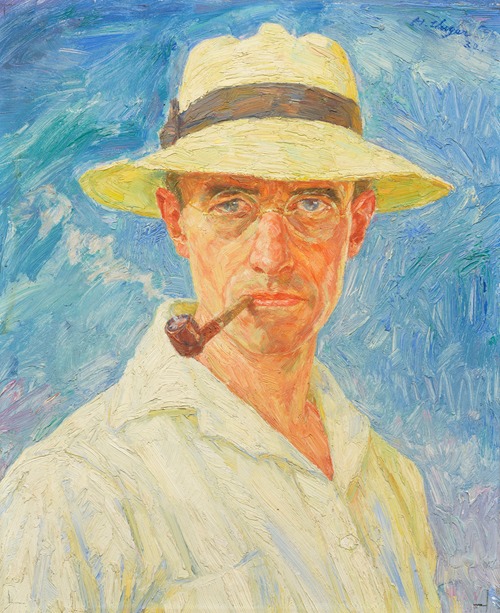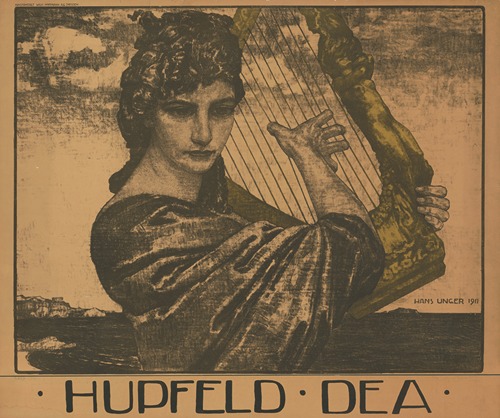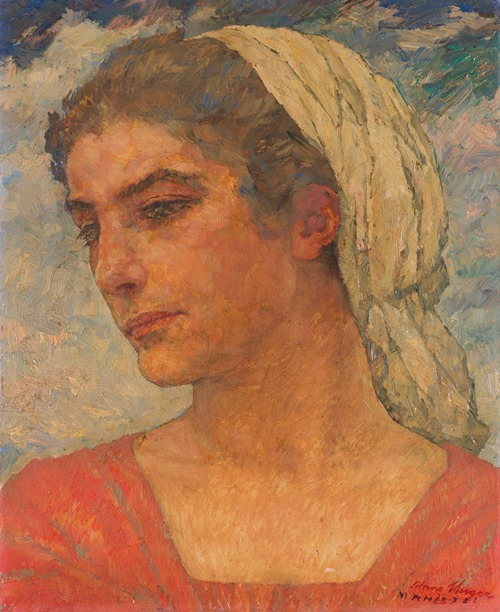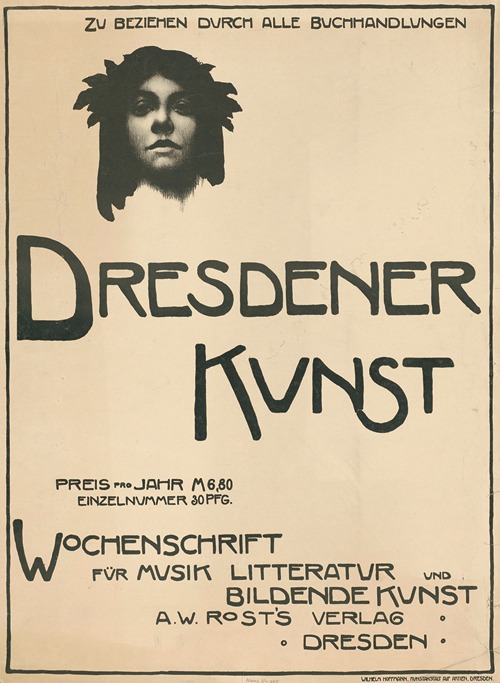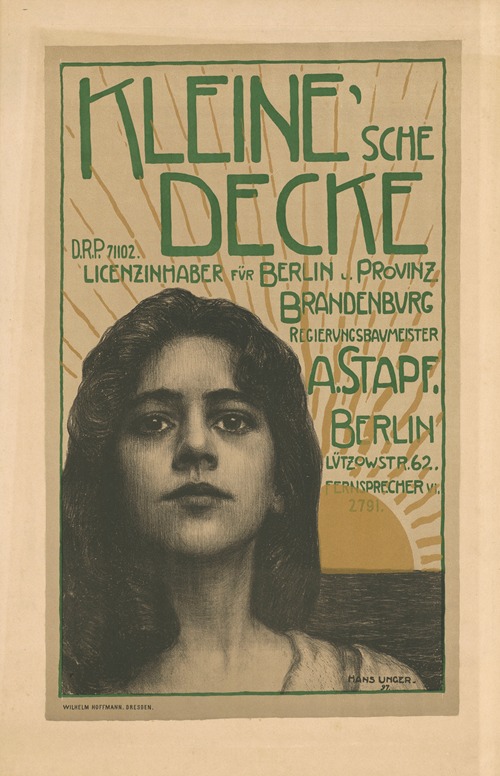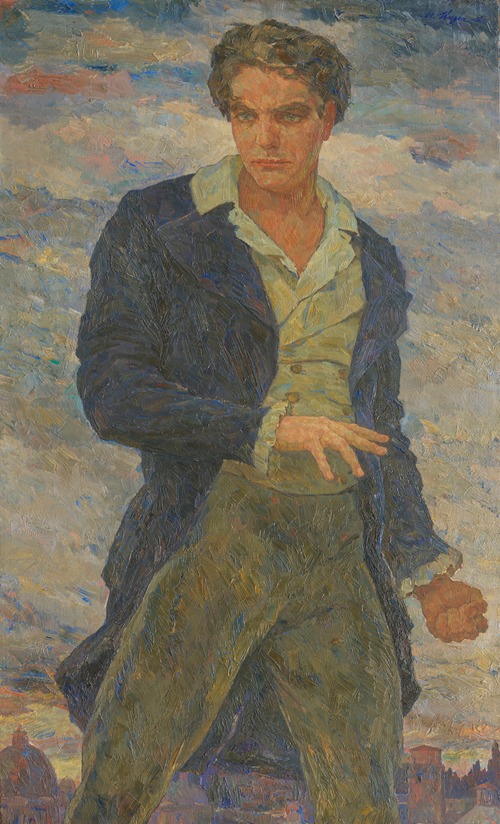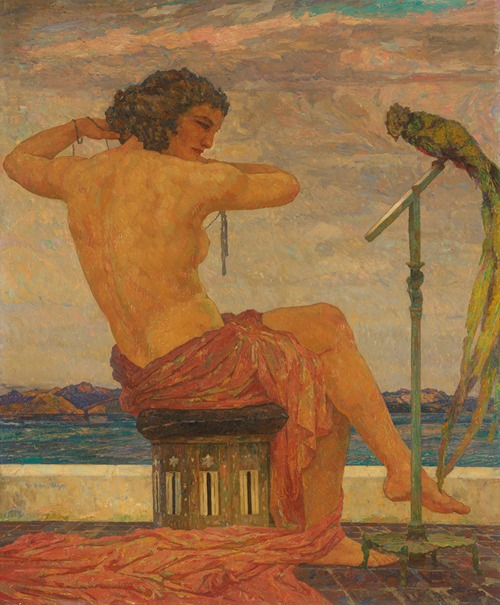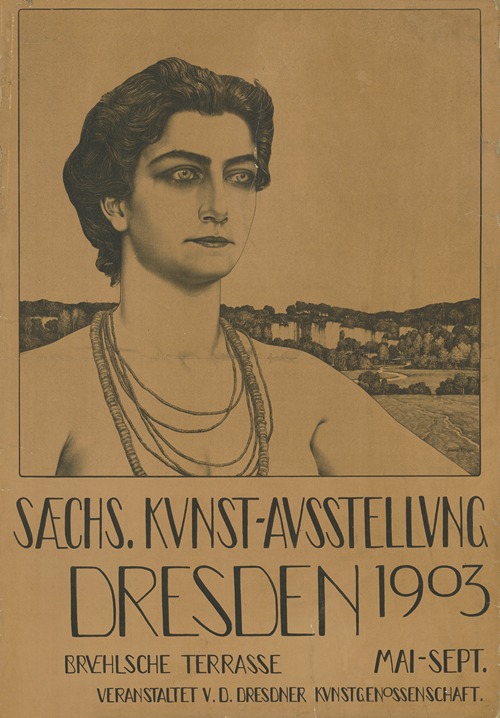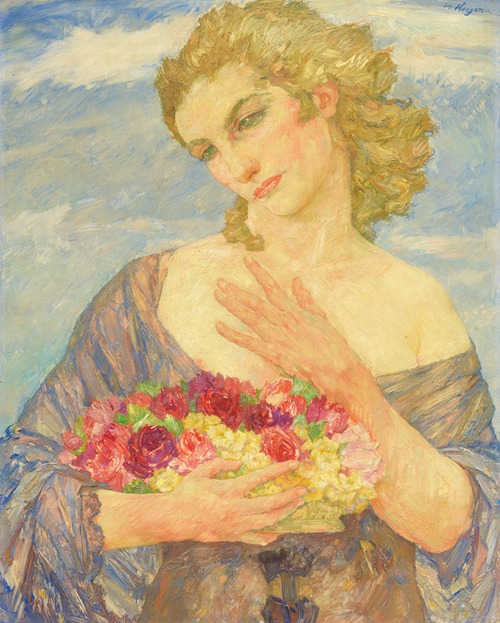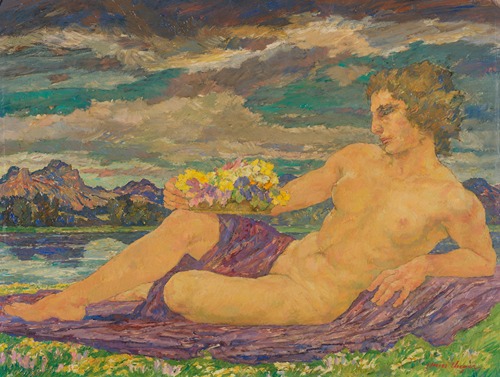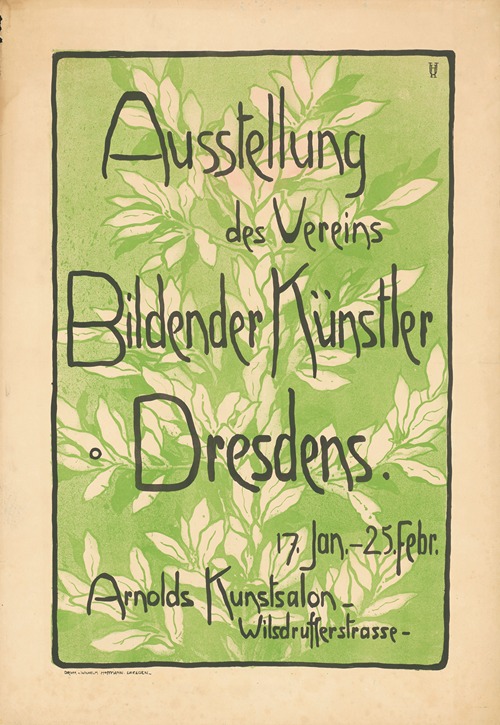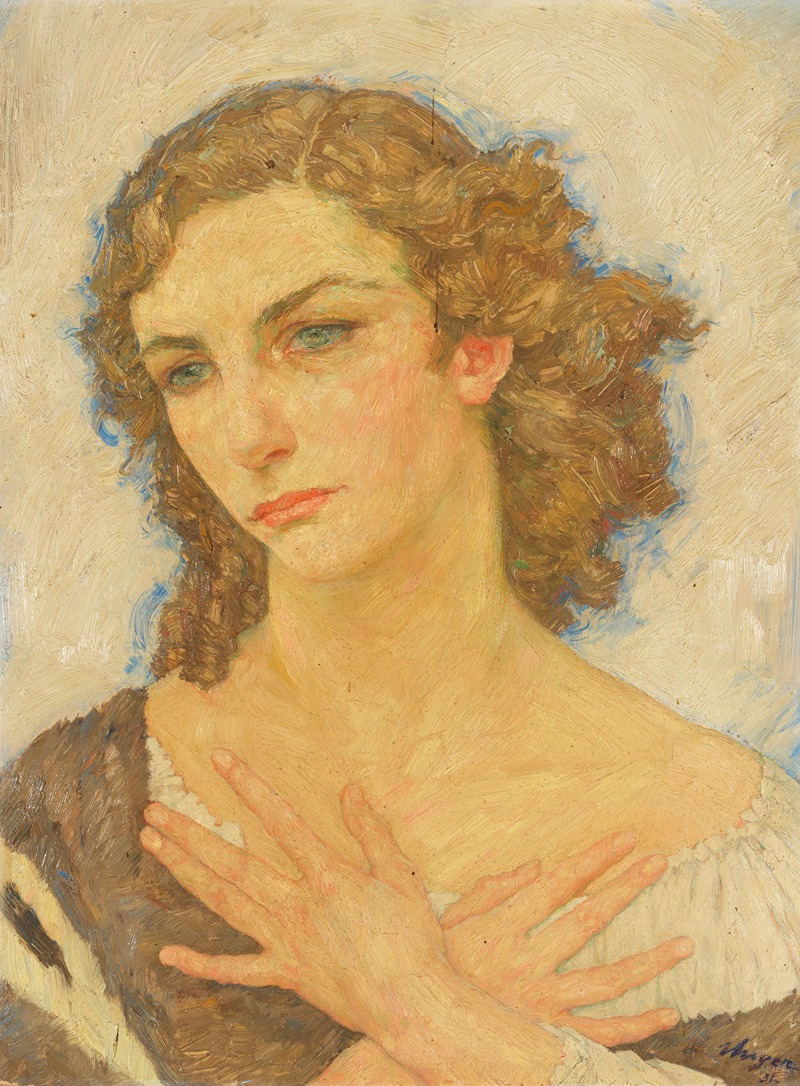
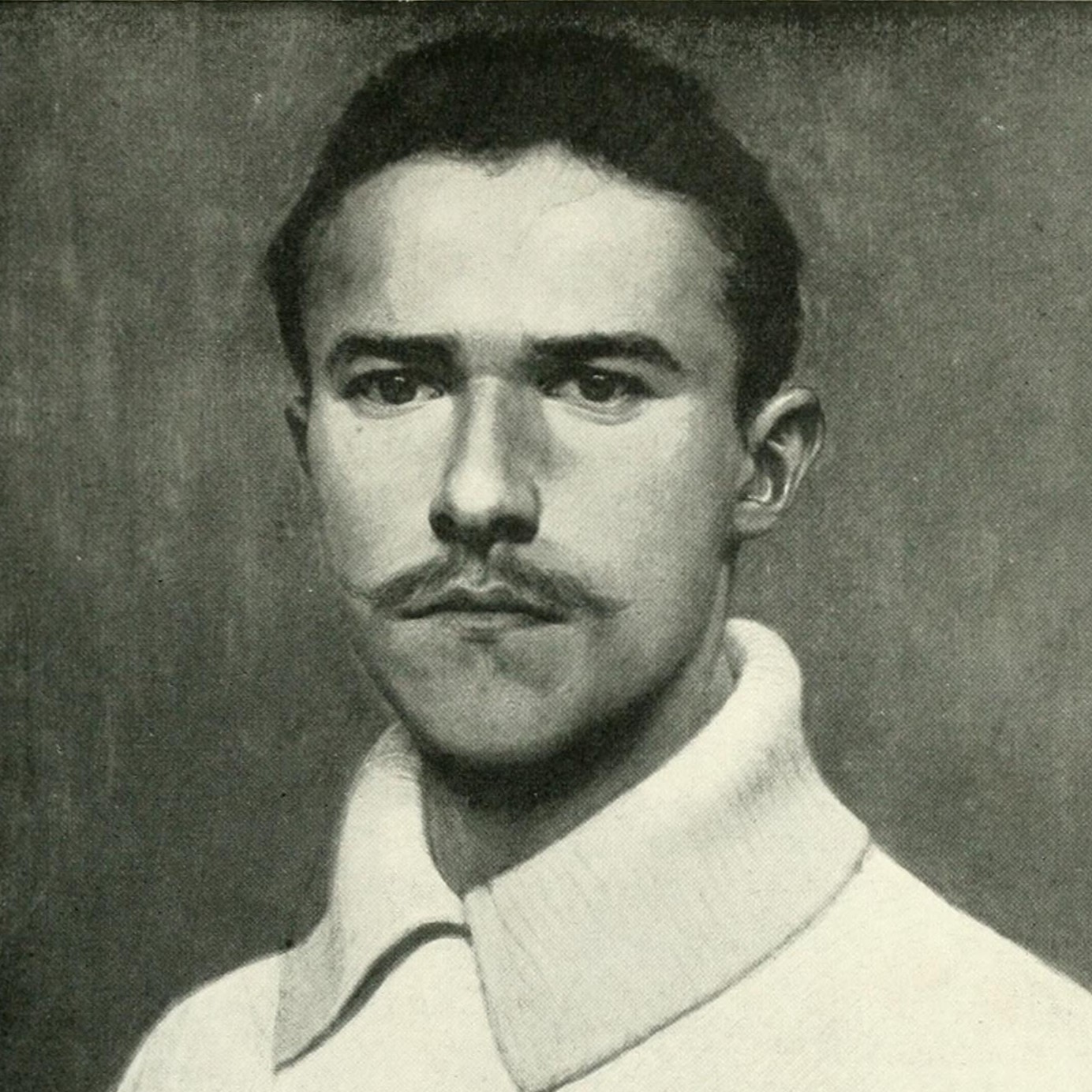
Hans Unger was a German painter who was, during his lifetime, a highly respected Art Nouveau artist. His popularity did not survive the change in the cultural climate in Germany after World War I, however, and after his death he was soon forgotten. However, in the 1980s interest in his work revived, and a grand retrospective exhibition in 1997 in the City Museum in Freital, Germany, duly restored his reputation as one of the masters of the Dresden art scene around 1910.
Unger was a portraitist and a landscape painter but his reputation stems from his paintings, most of them nearly life-size, of "beautiful women dreaming of Arcadia." In fact, it was always the same woman being portrayed: his wife in real life, his muse. Later, his daughter Maja came to share her mother's privileged position. The background to his "Arcadian woman" was quite often a pastoral landscape with high cypresses, a garden or a seaside scene.
In his work he was influenced by some important 19th-century and contemporary artists, among who were: Puvis de Chavannes ("beauty as religion"), Gustave Moreau, Josephin Péladan (the androgyne type), Fernand Khnopff (sphinx-like women, although Unger omitted the lascivious eroticism of Khnopff), William Strang (a British engraver whom Unger met in 1895 in Dresden, and later visited in London) and Dante Gabriel Rossetti. Other important influences were Edward Burne-Jones, Arnold Böcklin (especially his landscapes) and Max Klinger.
